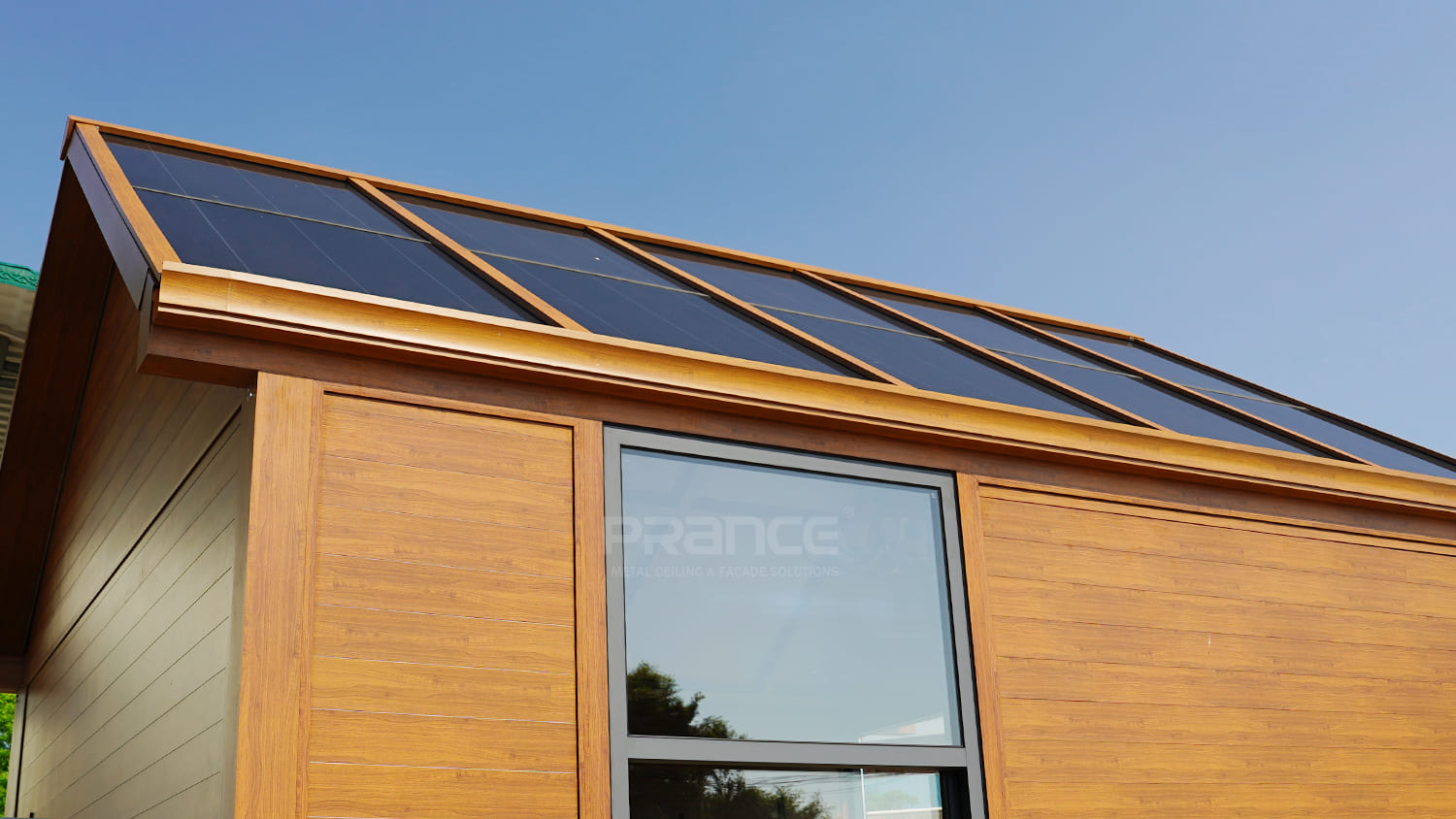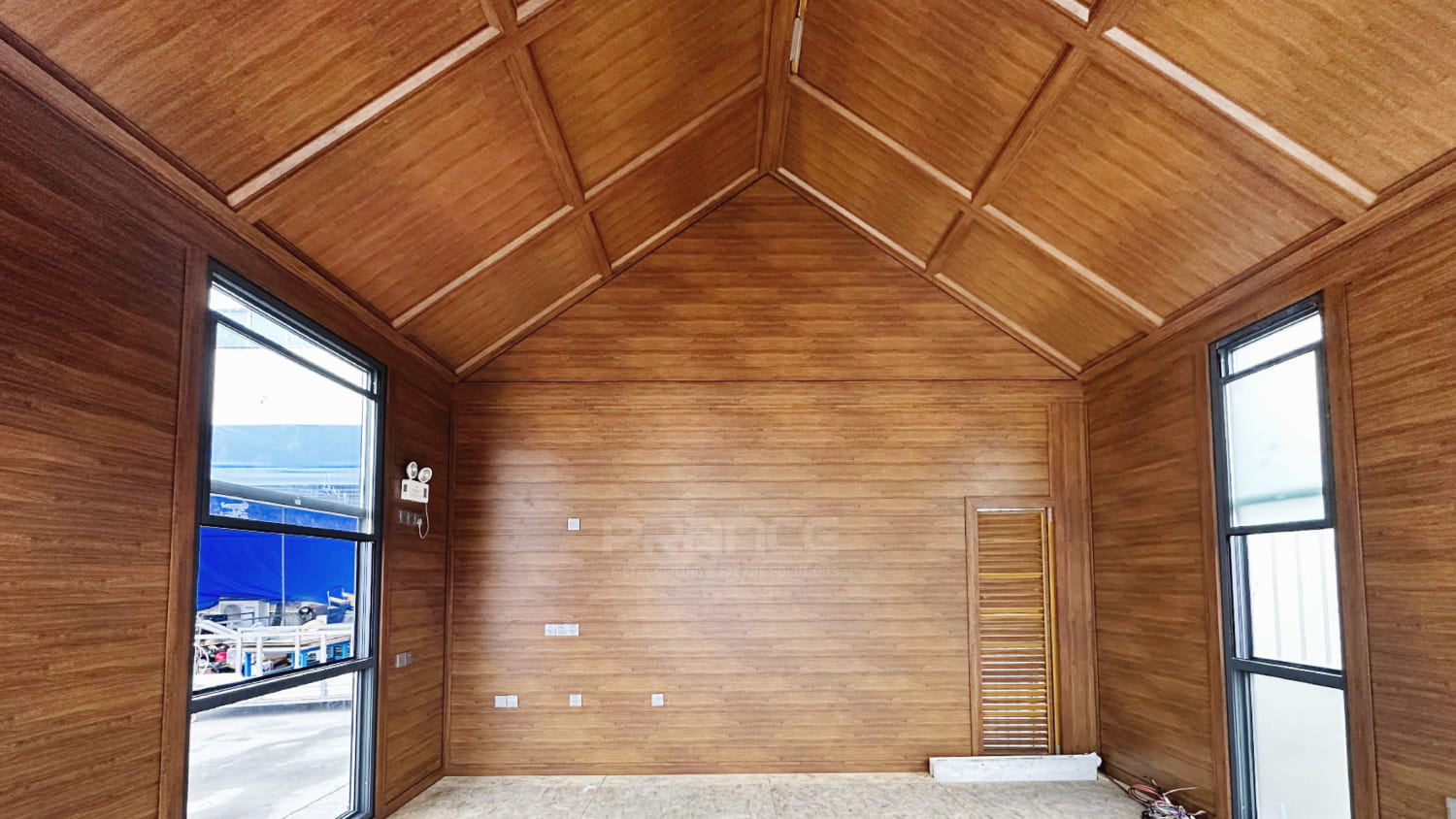PRANCE metalwork is a leading manufacturer of metal ceiling and facade systems.
How Are Prefabricated Tiny Homes Helping Cut Commercial Space Costs?
It’s no secret that setting up commercial spaces is getting more expensive. Land is costly. Labor is harder to find. Construction delays are common. That’s why more businesses are turning to prefabricated tiny homes as a smarter, faster, and more affordable way to expand or operate.
What makes them stand out is not just the size, but how they’re built and used. A prefabricated tiny home is made in a factory and shipped in parts, often inside a standard container. Once it arrives, it takes just four workers and two days to complete the full installation. PRANCE Metalwork Building Material Co. Ltd is one of the key manufacturers offering these smart structures, built using aluminum and steel for strength, and solar glass to save on electricity costs.
Let’s explore how prefabricated tiny homes help businesses cut costs while still delivering everything they need in a functional and professional space.
Reduced Energy Bills with Built-In Solar Glass

Another way prefabricated tiny homes help cut costs is through smart energy use. PRANCE integrates solar glass into its designs, which is a major upgrade from regular windows. This special glass lets in natural light but also captures solar energy and turns it into electricity.
This built-in system can help run lights, fans, or small appliances, reducing how much you rely on the main power grid. Over time, this leads to lower monthly utility bills—something every business can appreciate. It also helps meet sustainability goals, especially in regions that promote energy-efficient commercial buildings.
Smaller Footprint Means Lower Land Costs
Land is expensive, especially in cities and commercial zones. A traditional building might require more space than your business actually needs. That’s where prefabricated tiny homes really shine. Their compact size allows you to use smaller lots that would be too tight for standard construction.
You can set up one of these homes in spaces behind warehouses, on empty corners, or on narrow plots. This makes them a smart solution for pop-up stores, temporary field offices, and staff accommodations. Using less land means paying less in rent or land purchase costs—and sometimes even avoiding the need to rezone a property.
Lower Maintenance and Repair Costs

Running a business from a space that constantly needs repairs is frustrating—and expensive. With prefabricated tiny homes, that issue is reduced. These units are made from aluminum and steel, two materials that are known for being low-maintenance and highly durable.
Aluminum resists rust and doesn’t warp in humid conditions. Steel gives the structure the strength it needs to last through frequent use or even relocation. This means less money spent on fixing walls, replacing damaged parts, or repainting surfaces. And since these materials are easy to clean, your staff also spends less time and effort on upkeep.
Quick Setup Means Less Downtime
Dontime costs money. Whether you’re waiting for a site office to be ready or setting up a small commercial outlet, time wasted waiting for construction to finish can lead to lost sales or project delays. With prefabricated tiny homes, you avoid that risk.
Since the structure is mostly assembled in a factory, it’s delivered to your site almost ready to go. With a team of just four people, the whole thing is installed in two days. You can start using the space almost immediately after that—whether it’s for meetings, accommodations, or customer interaction.
That quick setup reduces downtime and helps you start making money faster.
Transport and Reuse Adds Long-Term Value
Businesses don’t always stay in one place. Sometimes you finish a project and move to a new location. Rebuilding every time can be costly. Prefabricated tiny homes solve this by being highly portable.
The structure is built to fit inside a shipping container and can be moved without breaking it down into pieces. You transport it, reinstall it, and keep using it. This gives you long-term value and flexibility, especially if you’re a business that operates across multiple sites or locations.
You’re not just buying a one-time use product—you’re investing in something you can reuse over and over again.
Custom Layouts Prevent Unnecessary Spending

Many business spaces end up being too big or too empty. That’s not just a waste of space—it’s a waste of money. With prefabricated tiny homes, you get the size you need and nothing more. But that doesn’t mean they can’t be customized.
PRANCE allows you to adjust the interior layout before the unit is made. Whether you need shelves, a work desk, a bathroom, or just an open space, the design can be tailored for your exact needs. This customization helps you avoid spending extra on renovations, furniture, or fixtures after the unit arrives.
Smart Features Reduce Utility and Staffing Costs
Running a building can take more than just money—it can take people. With prefabricated tiny homes, many things are automated or built-in, helping reduce the need for on-site maintenance staff or extra utility controls.
Smart curtains, ventilation systems, and lighting controls are available right from the start. These systems save energy and make the space easier to manage. If you're using the space for staff housing or small offices, this kind of smart automation helps you cut operational costs and improve comfort at the same time.
Conclusion
Prefabricated tiny homes offer a clear path to cutting costs in the commercial sector. From the moment they’re built to the years they’re used, they help save money on land, labor, energy, and maintenance. Built with strong materials like aluminum and steel, and powered partly through solar glass, they’re designed to work smarter—not harder.
They also move easily, install quickly, and serve many purposes—from office use to short-term lodging to pop-up shops. That flexibility and long-term use mean more value from a smaller investment.
To find out how you can set up a prefabricated tiny home that fits your business needs, contact PRANCE Metalwork Building Material Co. Ltd. Their homes are built to last, perform, and help you save at every step.




















